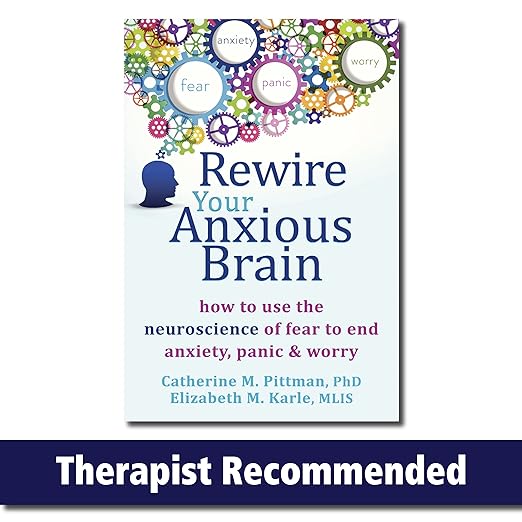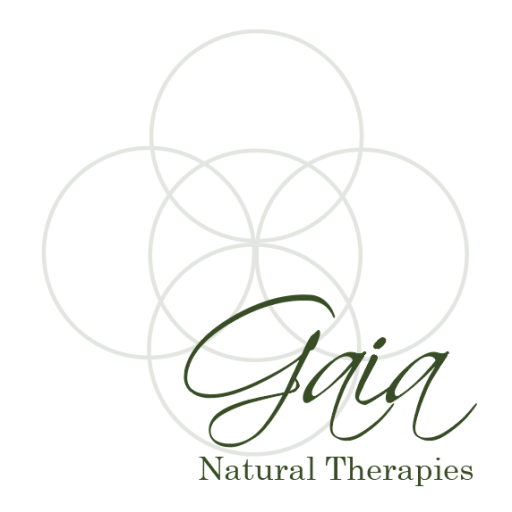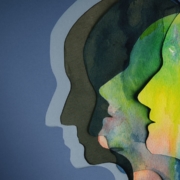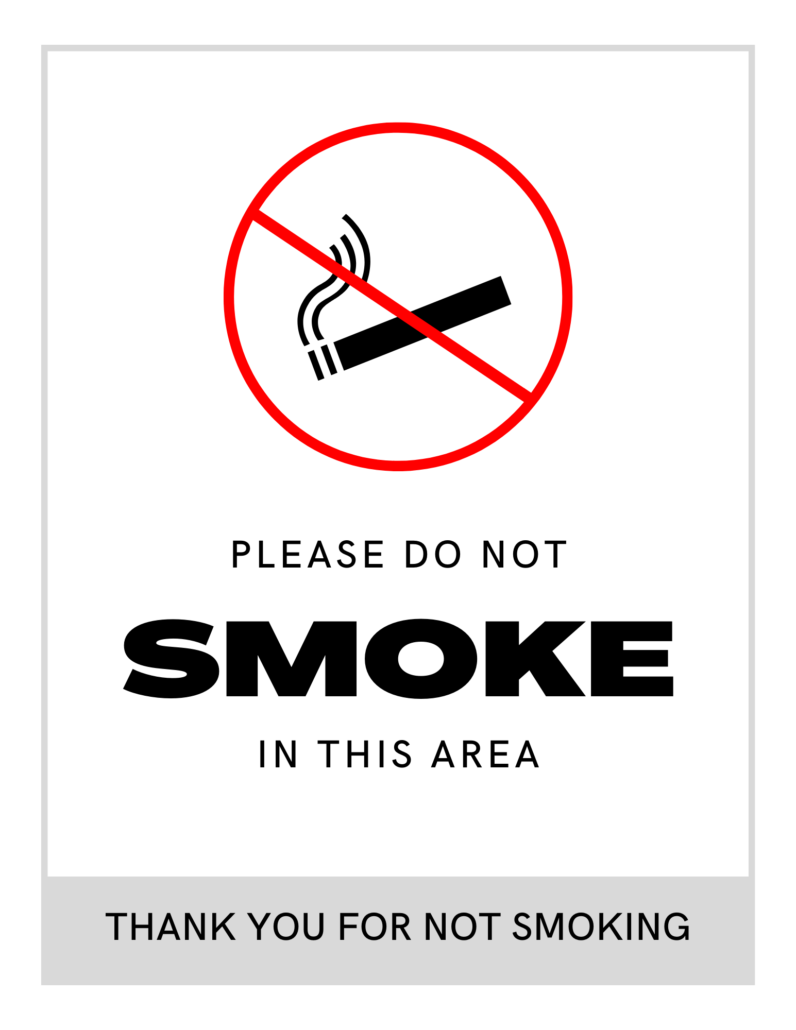Book Review: Rewire Your Anxious Brain
Unraveling Anxiety: An Integrated Journey
This book review was written for the Canadian Association of Counseling Hypnotherapists and Educators as part of on going continuing education and personal development. You can find the original article here: CACHE Resources

Note: For this book review, I looked to the authors’ concepts on how the anxious brain works and how I may seamlessly intertwine them with hypnotherapy.
Today I explore the transformative insights from Catherine M. Pittman and Elizabeth M. Karle’s book, ‘Rewire Your Anxious Brain’. An inviting book that guides readers on an integrative exploration of managing anxiety. Written from a neuroscience view point it dives in the reasoning and processes one can experience and learn to reduce fear and end anxiety. This book was delightfully an easy read – not full of unexplained scientific terminology but rather a normalized language, with easy-to-follow exercises and explanations.
In my journey, I dove with the authors into the intricate workings of the brain’s fear response, as they unraveled the mysteries of the amygdala. They detailed the role of how the amygdala1 works – its role in anxiety. From this journey I have concluded “Rewire Your Anxious Brain” can serve as a compass, used in navigating the intersection of cognitive-behavioral techniques and the practice of client centered hypnotherapy and here is why.
When speaking to the working of hypnotherapy, I speak of the connection between the conscious mind and the subconscious mind. How it serves as a therapeutic modality allowing the client or individual to change and or modify (personally) their goals through suggestion and metaphor. This is akin to the insights presented in “Rewire Your Anxious Brain”. Where individuals embark on a personal transformative journey of the mind and how information is passed and stored. Including how life experiences play a role in our perceptions and how the Amygdala’s reactions are not logical. Very similar to what we experience and understand about the subconscious mind in hypnotherapy.
Hypnotherapy becomes a complimentary therapeutic modality, as it can seamlessly intertwine the books’ concepts and breathing exercises, guides individuals into a relaxed state. Ultimately to the place where the subconscious mind becomes more amenable to positive suggestions. I believe the practice of hypnotic process is in alignment with the book’s emphasis on reshaping the thought patterns thus addressing the key factors of anxiety.
My spiritual perspective of Hypnotherapy is that of hypnosis being a conduit to the subconscious. And this conduit can become a canvas of, visualization, imagery, and story (metaphor). This perception is very similar to the book’s principal techniques of breath work, diagramming triggers (like parts therapy) are artfully applied. The book emphasizes the role of neuroplasticity, the brain’s ability to reorganize itself, and how one can leverage this phenomenon to rewire anxious responses. The role of a trained hypnotherapist is very similar as we work to assist the client to find their trigger (or goal) and to explore ways to transform it.
The book’s insights into the plasticity of the brain, gives us a scientific foundation for understanding how
hypnotherapy can influence and reshape ingrained anxious tendencies at a neural level. For instance, the
authors discuss the importance of repeated, focused attention to create lasting changes in the brain. This mirrors the repetitive and focused nature of setting an anchor or using metaphor, visualization and suggestion used in hypnotherapy sessions. By aligning and intertwining these practices, individuals engaging in both approaches may experience a collaborative effect, reinforcing positive changes initiated through hypnotherapy, with the scientifically supported strategies outlined in the book. Picture this as a collaborative dance between science, hypnotherapy, and the subconscious, orchestrated to break free from the shackles of anxiety.
As I journeyed deeper, the practical exercises and mindfulness techniques laid out by the authors have become welcoming tools to enhance my practice. For example: The use of muscle tension inventory or exploring an exercise of tension vs relaxation can be written into knowledgeable scripts or used as components of parts therapy, guided imagery, or visualization techniques such as the split screen approach. Put into practice those guided through a hypnosis session can reshape their inner narrative, navigating the labyrinth of anxiety with newfound clarity and resilience. Since reading “Rewire Your Anxious Brain” I have witnessed many benefits of this book’s insights.
Enhancing my clients’ understanding of the processes of the conscious and subconscious mind.
- Facilitating the integration of the scientific concepts from “Rewire Your Anxious Brain” allows the
client to better understand how and why they experience what they experience. - Has allowed me to embrace a more comprehensive and empowering approach to anxiety
management within the framework of integrative healing. - This intertwining or fusion of practices aligns seamlessly with my mission, of promoting self-awareness
and self-empowerment. - It has allowed me to paint a canvas where mental well-being isn’t just a destination but a
transformative journey through the realms of consciousness.
To conclude – the central idea of this book revolves around the concept of neuroplasticity, the brain’s ability to reorganize itself by forming new neural connections. Author’s Pittman and Karle explain how anxiety is rooted in the brain’s wiring and offer insights into understanding the biological and psychological factors contributing to anxious thoughts and behaviors.
A key takeaway is the importance of mindfulness, self-awareness, self-care and how it can be employed to reshape neural pathways associated with anxiety. The authors provide many easy-to-follow techniques, including cognitive-behavioral strategies, to interrupt anxious thought patterns and replace them with healthier alternatives. Offering a blend of scientific insights and practical exercises, the book empowers readers, clients, and therapists to take an active role in the process of rewiring anxious brains.
This book has been a great addition to my practices’ approach, to self-empowerment. I can see how integrating the principles from “Rewire Your Anxious Brain” complements my existing practices, allowing me to provide individuals with valuable tools to address the mental health aspect of their overall wellbeing.
Rewire Your Anxious Brain – Catherine M. Pittman, PhD., Elizabeth M. Karle, MLIS
New Harbinger Publications – ISBN: 978-1-62625-113-7
1 Amygdala – https://study.com/academy/lesson/the-amygdala-definition-role-function.html
Blessings: Deirdre



 Deirdre Leighton
Deirdre Leighton
 Deirdre Leighton
Deirdre Leighton







